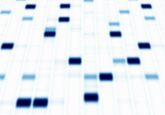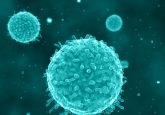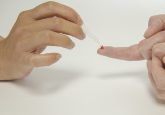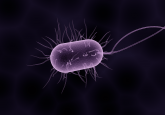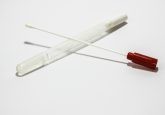Now that’s what I call biosensors

A team of researchers from Binghamton University (NY, USA) have proposed an innovative solution to tackle the build-up of electronic waste by repurposing old CDs into wearable biosensors. Published in Nature Communications, Researcher Matthew Brown and Assistant Professor Ahyeon Koh demonstrate how functional bioelectronic devices – which can measure lactate, glucose, pH and oxygen levels in addition to electrical activity in skeletal and cardiac muscle – can be made by upcycling compact disks. This practical approach provides a feasible, research-based waste stream to assist in reducing the number of CDs destined for landfills.
Brown’s earlier studies on CD-based biosensors resulted in rigid sensors, which had fewer applications. This limitation was overcome by separating the thin metallic layer of a gold CD from the hard plastic using a chemical process and adhesive tape, which was used to form a flexible and stretchable biosensor.
Koh explains the separation process simply:
“When you pick up your hair on your clothes with sticky tape, that is essentially the same mechanism. We loosen the layer of metals from the CD and then pick up that metal layer with tape, so we just peel it off. That thin layer is then processed and flexible.”
The fabrication process takes 20 to 30 minutes to complete and avoids the use of hazardous chemicals or expensive machinery. High-level engineering skills and microfabrication facilities are not required, broadening the range of disciplines able to adopt these devices for research. Each biosensor costs approximately $1.50 to make, meaning that they are economically viable even for small studies. The sensors can also be linked to a smartphone via Bluetooth.
You may be interested in:
- The latest sweat accessory: New ‘necklace’ biosensor has the potential to track blood sugar levels through sweat
- Nanomechanical sensor for the detection of COVID-19
- Sweat it out: detecting infection biomarkers in human sweat with novel biosensor
Brown added:
“We used gold CDs, and we want to explore silver-based CDs, which I believe are more common. How can we upcycle those types of CDs with the same kind of process?”
Koh also highlights the importance of inclusivity and accessibility to this technology, irrespective of training or background:
“We also could have more generalized step-by-step instructions on how to make them in a day, without any engineering skills. Everybody can create those kinds of sensors for their users. We want these to become more accessible and affordable, and more easily distributed to the public.”
Overall, Koh and Brown offer a sustainable, cost-effective and attainable method for biosensor development, which can be utilized by non-experts and improves on previous non-durable and non-wearable platforms.
Sources: Brown MS, Somma L, Mendoza M, Noh Y, Mahler G & Koh A. Upcycling compact disks for flexible and stretchable bioelectronic applications. Nat. Commun. Dio: 10.1038/s41467-022-31338-9 (2022) (Epub ahead of print). Eureka Press Release, https://www.eurekalert.org/news-releases/959591

